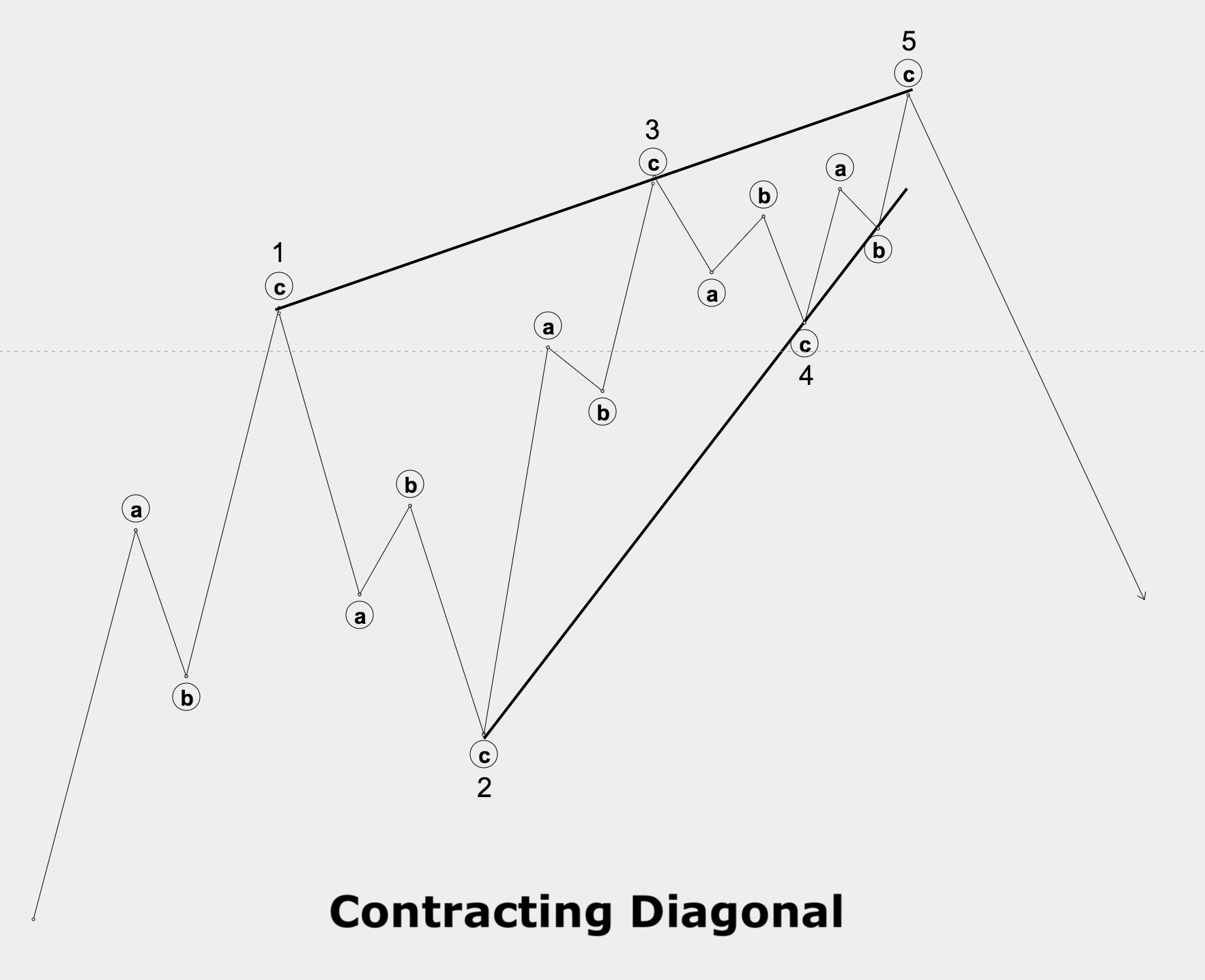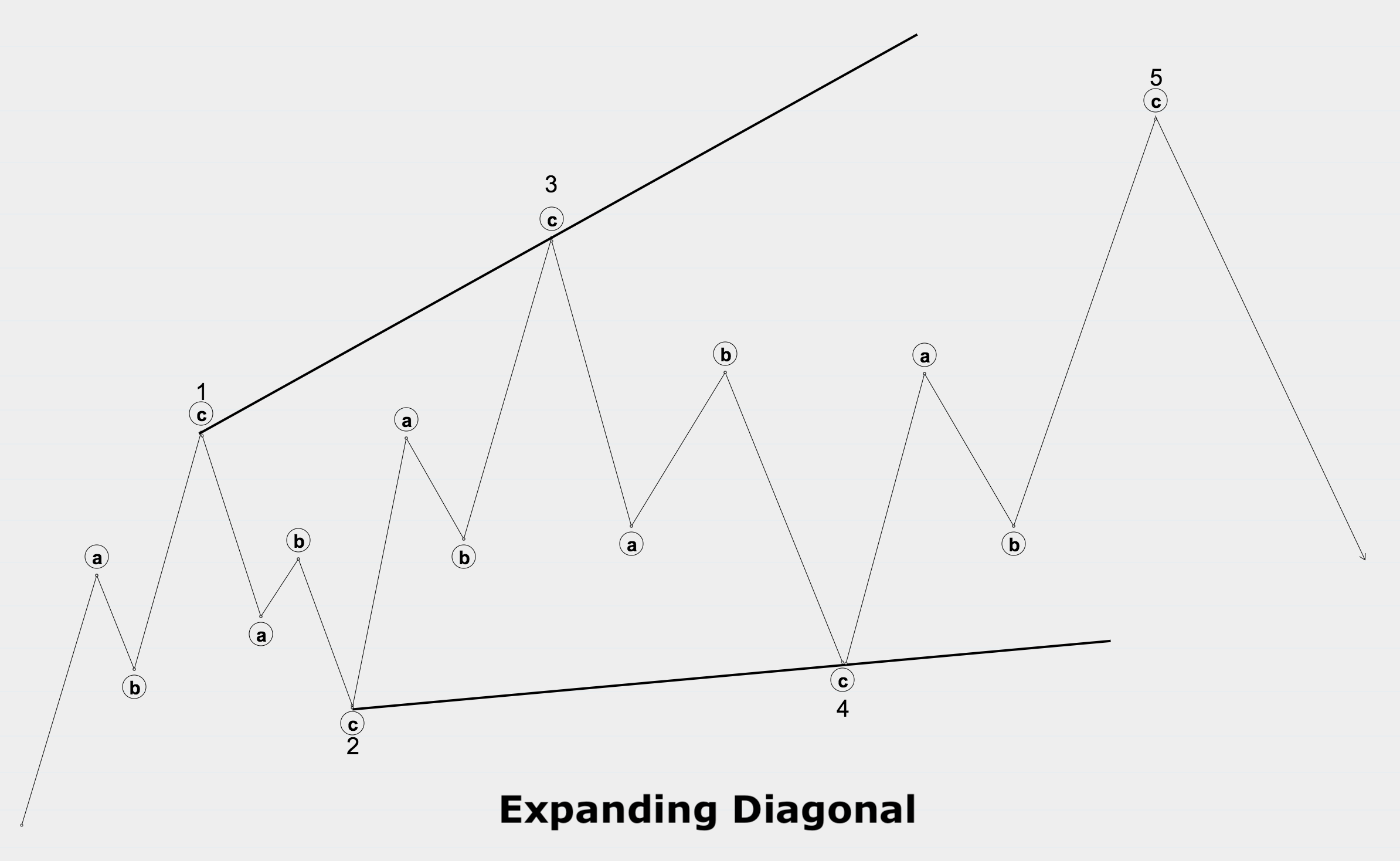Rules
- A diagonal subdivides into 5 waves
- Wave 2 cannot retrace more than 100% of wave 1
- Wave 3 cannot be the shortest of the three action waves, 1,3, and 5
- Wave 3 always goes beyond wave 1
- A diagonal appears only as wave 1(leading) or 5(ending) of an impulse or as wave A(leading) or C(ending) of a zigzag
- All 5 subwaves of an ending diagonal are decomposed in zigzags
- Waves 2 and 4 of a leading diagonal are decomposed in zigzags
- Wave 4 never moves beyond the end of wave 2
- Wave 4 always overlaps wave 1
- Contracting diagonals have always a shorter 3rd wave relative to their 1st wave
- Contracting diagonals have always a shorter 5th wave relative to their 3rd wave
- Contracting diagonals have always a shorter 4th wave relative to their 2nd wave
- Expanding diagonals have always a longer 3rd wave relative to their 1st wave
- Expanding diagonals have always a longer 5th wave relative to their 3rd wave
- Expanding diagonals have always a longer 4th wave relative to their 2nd wave
- A leading, as well as an expanding diagonal, is never truncated

-
Guidelines
- Diagonal occur because of transitory forces of trend changes act against each other
- Waves 2 and 4 retrace a great proportion (at least 50%) of their preceding wave
- Ending diagonals are rare
- Generally, count diagonals in real-time once wave 4 is almost complete
- Sometimes the zigzags may subdivide further into double zigzags
- Ending diagonals usually cause substantial reversals
- Expanding leading diagonals appear sometimes at the start of stock market declines

